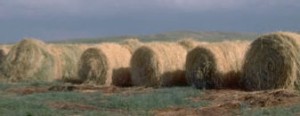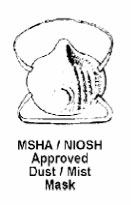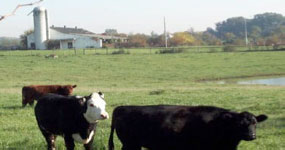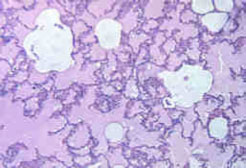Respiratory Conditions
Respiratory Problems in Dairy Farmers
Exposures to dusts and toxic gases is not uncommon to dairy workers. Conditions such as Organic Dust Toxic Syndrome, Farmers Lung and Silo Filler’s Disease can all be linked to exposures found in the dairy farming environment. In practice, asthma and bronchitis are the most common respiratory problems associated with barn work.
Organic Dust Toxicity Syndrome
Prevalence of up to 20% in some farming populations Presentation: (Onset 4-12 hours after exposure to extremely high levels of organic dust)

- Fever
- Cough
- Chest tightness
- Fatigue
- Chills
- Muscle aches and pains
- Shortness of breath
- Benign course of the disease
Organic Dust Toxicity Syndrome
Organic Dust Toxicity Syndrome follows work in very dense dust from:
- Silo uncapping
- Decayed hay
- Grain storage bins
Susceptibility increases with increased levels of dust.
Job Tasks
Job tasks linked to exposures:
- Opening silos
- Work with compost materials
- Cleaning out corn cribs
- Cleaning out grain storage bins
Organic Dust Toxicity Syndrome
Important facts:
- No significant hypoxia
- Minimal findings on chest X-ray
- Does not lead to permanent scarring changes in lungs
- Symptoms seldom last > 2-5 days
- Does not require hospitalization
- Can be treated with Aspirin

Patient Advice
- Put a little water on the source of the dust
- Use two-strap dis- posable dust masks that have been fitted prop- erly and stored in air-tight containers
- Improve ventilation
Rask-Anderson A. 1989. Organic Dust Toxic Syndrome among Farmers. British Journal of Industrial Medicine, 46:233- 38.
Von Essen S, et al. 1990. Organic Dust Toxic Syndrome: An Acute Febrile Reaction to Organic Dust Distinct from Hy- persensitivity Pneumonitis. Clinical Toxicology, 28(4):389-420.
Farmer’s Lung and Silo Fillers disease
Farmers Lung
Farmers Lung (hypersensitivity pneumonitis) is far less common than Organic Dust
Toxicity Syndrome – Prevalence of less than 5% in most farming populations*
Presentation: (Onset 4-12 hours after exposure to mod- erate levels of organic dust)
- Dyspnea
- Fever
- Cough
- Chest tightness
- Fatigue
- Chills
- Muscle aches and pains
Farmers Lung Patient advice
- Use moisture to prevent aerosolization of dust.
- Use ventilation to prevent exposure to dust.
- Use two-strap, NIOSH-approved respirator when dust can not be entirely avoided.
 Farmers Lung important facts
Farmers Lung important facts
- Causes significant hypoxia and leukocytosis
- Chest X-ray usually abnormal
- Easily mistaken for pneumonia
- Resolves quickly with steroids
- Usually requires hospitalization
- Can lead to permanent scarring changes in lungs
- Need to assure adequate dust avoidance and protection to prevent recurrences

Lung tissue slide of Silo Filler's Disease.
Silo Filler’s Disease
Inhalation of silo gas from some silos filled during past week—mainly corn silage.
- Dense gas with bleach-like odor is sometimes present
- High levels of NO2 can cause severe alveolitis or ARDS
- Onset of cough, SOB within 2 hours of exposure
- Requires hospitalization, O2 monitoring and steroids
Silo Filler’s Disease Patient
Advice: If silo must be entered, do it immediately after filling with the blower going. Entrance is acceptable again after two weeks and after blower has been running for 30-45 minutes. Have someone check on you periodically.